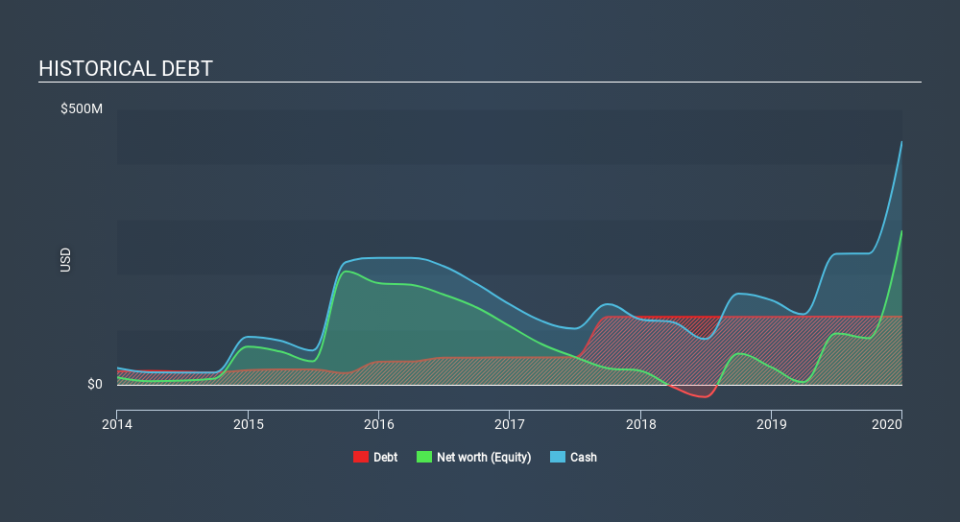Is Natera (NASDAQ:NTRA) Weighed On By Its Debt Load?

David Iben put it well when he said, 'Volatility is not a risk we care about. What we care about is avoiding the permanent loss of capital. So it might be obvious that you need to consider debt, when you think about how risky any given stock is, because too much debt can sink a company. As with many other companies Natera, Inc. (NASDAQ:NTRA) makes use of debt. But the more important question is: how much risk is that debt creating?
When Is Debt A Problem?
Generally speaking, debt only becomes a real problem when a company can't easily pay it off, either by raising capital or with its own cash flow. Part and parcel of capitalism is the process of 'creative destruction' where failed businesses are mercilessly liquidated by their bankers. While that is not too common, we often do see indebted companies permanently diluting shareholders because lenders force them to raise capital at a distressed price. Of course, plenty of companies use debt to fund growth, without any negative consequences. When we examine debt levels, we first consider both cash and debt levels, together.
Check out our latest analysis for Natera
What Is Natera's Net Debt?
As you can see below, Natera had US$123.8m of debt, at December 2019, which is about the same as the year before. You can click the chart for greater detail. However, it does have US$441.0m in cash offsetting this, leading to net cash of US$317.2m.
How Healthy Is Natera's Balance Sheet?
According to the last reported balance sheet, Natera had liabilities of US$179.9m due within 12 months, and liabilities of US$124.1m due beyond 12 months. Offsetting these obligations, it had cash of US$441.0m as well as receivables valued at US$53.4m due within 12 months. So it can boast US$190.4m more liquid assets than total liabilities.
This short term liquidity is a sign that Natera could probably pay off its debt with ease, as its balance sheet is far from stretched. Succinctly put, Natera boasts net cash, so it's fair to say it does not have a heavy debt load! There's no doubt that we learn most about debt from the balance sheet. But ultimately the future profitability of the business will decide if Natera can strengthen its balance sheet over time. So if you're focused on the future you can check out this free report showing analyst profit forecasts.
In the last year Natera wasn't profitable at an EBIT level, but managed to grow its revenue by 17%, to US$302m. We usually like to see faster growth from unprofitable companies, but each to their own.
So How Risky Is Natera?
By their very nature companies that are losing money are more risky than those with a long history of profitability. And we do note that Natera had negative earnings before interest and tax (EBIT), over the last year. And over the same period it saw negative free cash outflow of US$68m and booked a US$125m accounting loss. But the saving grace is the US$317.2m on the balance sheet. That means it could keep spending at its current rate for more than two years. Even though its balance sheet seems sufficiently liquid, debt always makes us a little nervous if a company doesn't produce free cash flow regularly. The balance sheet is clearly the area to focus on when you are analysing debt. But ultimately, every company can contain risks that exist outside of the balance sheet. Take risks, for example - Natera has 3 warning signs we think you should be aware of.
If, after all that, you're more interested in a fast growing company with a rock-solid balance sheet, then check out our list of net cash growth stocks without delay.
If you spot an error that warrants correction, please contact the editor at editorial-team@simplywallst.com. This article by Simply Wall St is general in nature. It does not constitute a recommendation to buy or sell any stock, and does not take account of your objectives, or your financial situation. Simply Wall St has no position in the stocks mentioned.
We aim to bring you long-term focused research analysis driven by fundamental data. Note that our analysis may not factor in the latest price-sensitive company announcements or qualitative material. Thank you for reading.

 Yahoo Finance
Yahoo Finance 
